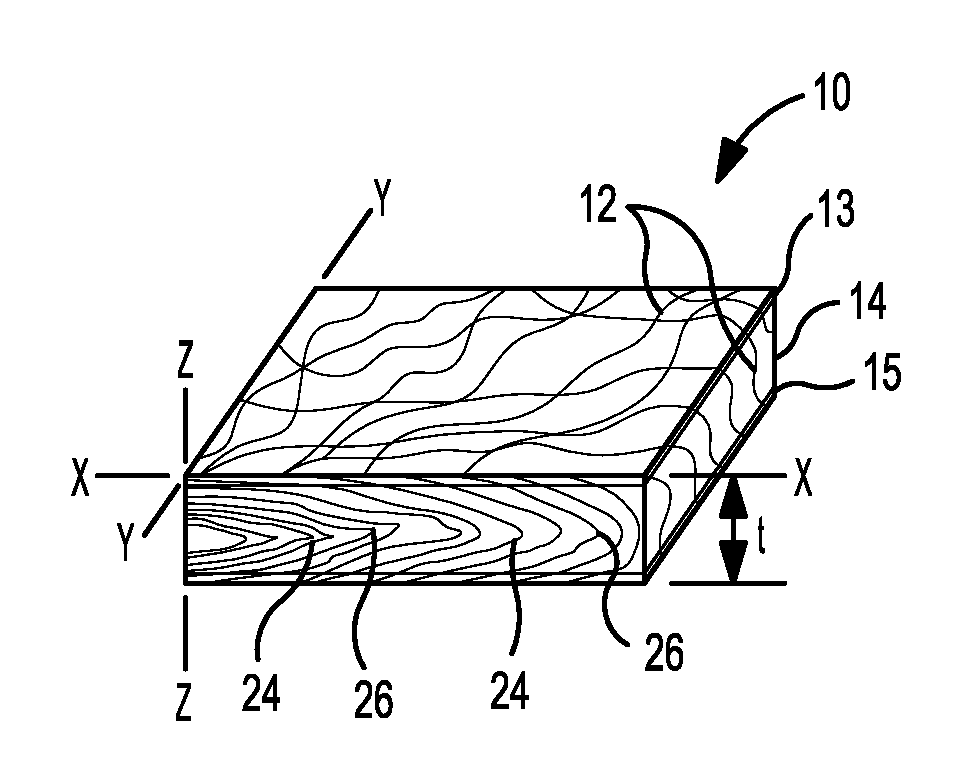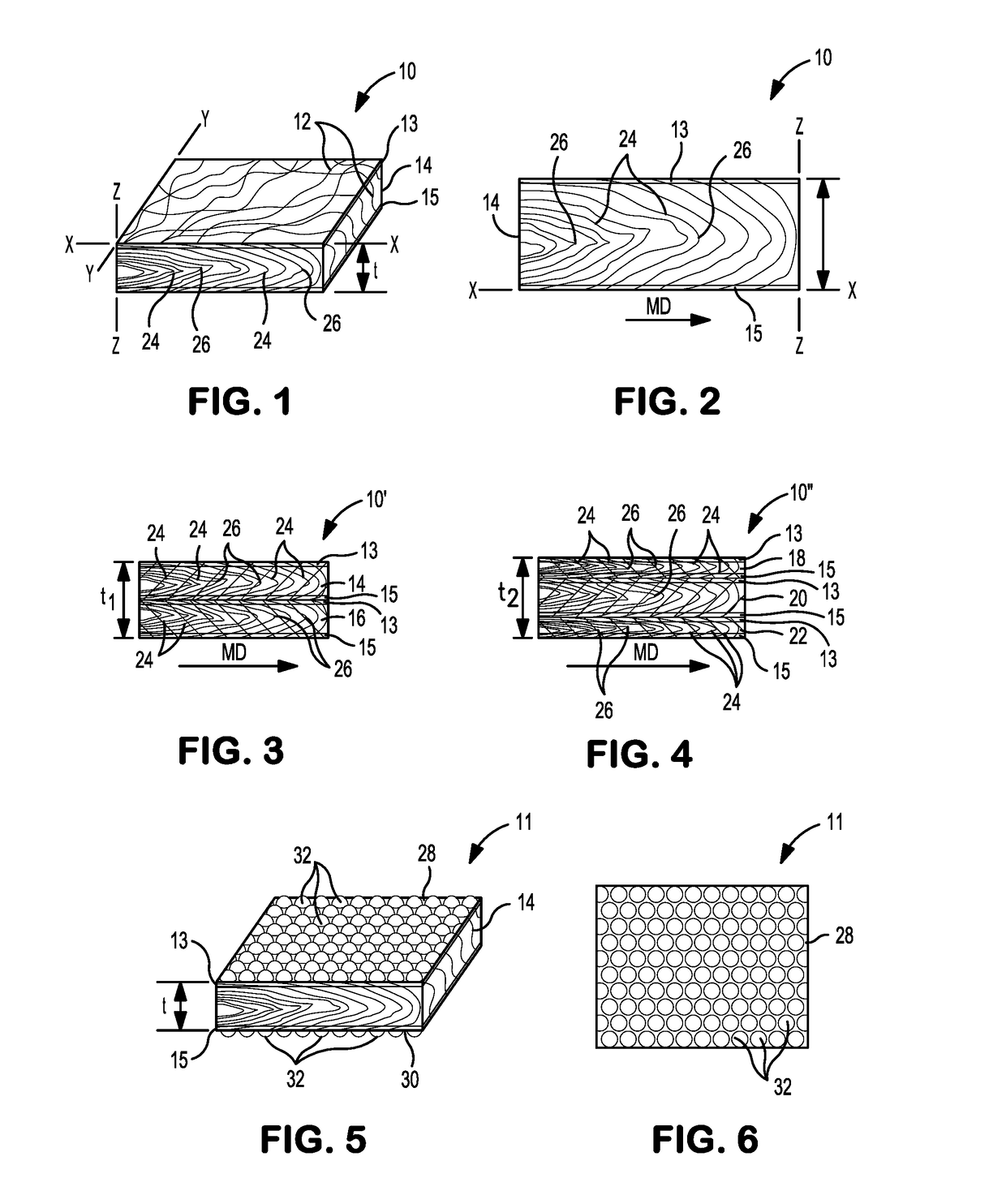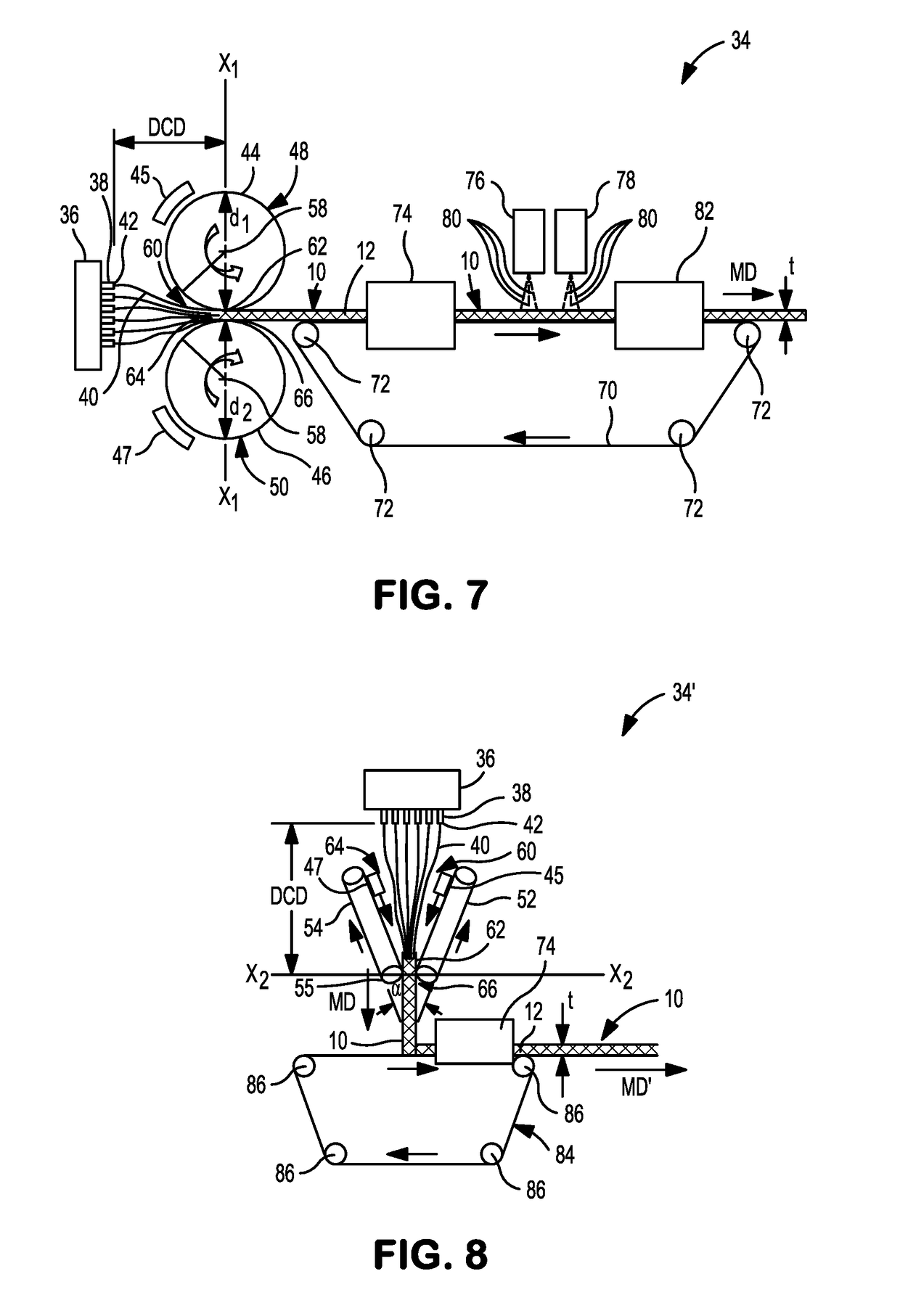High loft, nonwoven web exhibiting excellent recovery
a non-woven, high loft technology, applied in the direction of non-woven fabrics, thin material processing, textiles and papermaking, etc., can solve the problems of unable to recover to their original thickness, webs tend to become hard and/or stiff, and finished webs tend to lack recovery, etc., to achieve excellent recovery
- Summary
- Abstract
- Description
- Claims
- Application Information
AI Technical Summary
Benefits of technology
Problems solved by technology
Method used
Image
Examples
example 1
[0052]In this example, we were looking at the effect of spinning technology on web properties. Three (3) different non-woven webs were made using polypropylene resin. All three (3) had the same basis weight but each was spun using a different spinnerette design and different processing conditions. As shown in Table 1, sample S-1 was produced using a Biax multi-row spinnerette design that did not have air insulation inserts or an air shrouding curtain surrounding the periphery of the nozzles 38. Sample S-2 was produced using a conventional meltblown process which had only one line of nozzles along with inclined air jets. Sample S-3 was produced using the inventive process.
[0053]The sample S-3 achieved almost double the machine direction (MD) tensile strength as compared to sample S-1 or sample S-2. Also, one will notice that the fiber diameter of sample S-3 was slightly larger than the fiber diameter of the conventional meltblown sample S-2. The primary reason for this difference in ...
example 2
[0059]In this second example, we were comparing a sample produced by the inventive process S-5 to a sample produced by a conventional meltblown process S-4, and to a sample produced by a conventional spunbond process S-6. Three (3) samples were made and each had the same basis weight. As shown in Table 2, the properties of sample S-5 were about half-way between the properties of the conventional meltblown web S-4 and the conventional spunbond web S-6. Table 2 also shows that the air permeability of the sample S-5 (using our inventive process) falls almost half-way between the conventional meltblown sample S-4 and the conventional spunbond sample S-6. This proves that our new technology is capable of producing non-woven webs that have fine fiber diameters, comparable to meltblown fibers, yet still have strong fibers when compared to spunbond fibers.
[0060]Referring to FIG. 10, the machine direction (MD) tensile strength of the non-woven web 10, 10′, 10″ or 11 of this invention (sample...
PUM
| Property | Measurement | Unit |
|---|---|---|
| Size distribution | aaaaa | aaaaa |
| Size distribution | aaaaa | aaaaa |
| Temperature | aaaaa | aaaaa |
Abstract
Description
Claims
Application Information
 Login to View More
Login to View More - R&D
- Intellectual Property
- Life Sciences
- Materials
- Tech Scout
- Unparalleled Data Quality
- Higher Quality Content
- 60% Fewer Hallucinations
Browse by: Latest US Patents, China's latest patents, Technical Efficacy Thesaurus, Application Domain, Technology Topic, Popular Technical Reports.
© 2025 PatSnap. All rights reserved.Legal|Privacy policy|Modern Slavery Act Transparency Statement|Sitemap|About US| Contact US: help@patsnap.com



